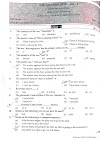Wanna know today's Nepali date and look for the Nepali calendar? If yes then this page is for you. Here we have shared with you today's Nepali date and the whole Nepali calendar. It is very simple to see. Hope you like it.
Today's Nepali date:
Nepali Calendar:
Also here is the yearly Nepali calendar:
If you have any queries about the Nepali Calendar then you can read the article below.
What is Nepali Calendar?
Bikram Sambat and also known as the Nepalese calendar is a historical calendar used in the Indian subcontinent. Vikram Sambat is generally 57 years ahead of the Gregorian calendar, except for the period from January to April, when it is 56 years ahead. Along with the Nepali Sambat, it is one of the two official calendars used in Nepal. Nepal's Bikram Sambat introduced in 1901 AD uses the solar sidereal year.
Nepalese calendar provides you, the exact dates of cultural events and festivals in Nepal from 1970 to 2100 B.S. for both the Gregorian and Nepalese calendars together.
What is today's Nepali Date?
History:
A number of ancient and medieval inscriptions used Vikram Samvat. Although said to have been named after the legendary king Vikramaditya, Samvatsara abbreviated to 'Samvat' is the Sanskrit word for 'year'. Emperor Vikramaditya of Ujjain started Vikram Samvat in 57 BC and this calendar is believed to follow his victory over Sakas in 56 BC.
It began in 56 BC in the southern (Amanta) and 57–56 BC in the northern (Purnimanta) systems of the Hindu calendar. Shukla Paksha in both systems coincides, most festivals are held in Shukla Paksha. The period is named after the Indian emperor Vikramaditya and was believed to be based on commemorating the expulsion of the Sakas from Ujjain by Emperor Vikramaditya. According to the Pratisarga Parvan of the Bhavisya Purana, he was the second son of Ujjain's king Gandharvasena of the Paramara dynasty. Vikramaditya was born in 102 BCE and died in 15 CE. The earliest reference to this period comes from an inscription of King Jaikadeva who ruled near Okhamandal in the state of Kathiawar (now Gujarat). The inscription gives 794 Vikram Samvat corresponding to 737 AD as the date of his installation.
Calendar System:
Vikram Samvat has two systems. It started in 56 BC in the southern Hindu calendar system (amaanta) and in 57–56 BC in the northern system (purnimaanta). Shukla Paksha, when most festivals take place, coincides in both systems. The lunisolar Vikram Samvat calendar is 56.7 years ahead of the solar Gregorian calendar; the year 2079 BS begins in mid-April 2022 CE and ends in mid-April 2023 CE.
The Rana dynasty of Nepal made Bikram Sambat the official Hindu calendar in 1901 AD, which began in 1958, abbreviated as BS. The New Year in Nepal begins on the first day of the month of Baisakh, which usually falls around the 13th-15th. April in the Gregorian calendar and ends on the last day of the month of Chitra. The first day of the new year is a public holiday in Nepal. Bisket Jatra, an annual carnival in Bhaktapur, is also celebrated on Baishakh 1. In 2007, Nepal Sambat was also recognized as a national calendar alongside Bikram Sambat.
New Year: Baisakhi is celebrated as Nepalese New Year because it is the day that marks Hindu Solar New Year as per the solar Nepali Bikram Sambat.
Months:
The classical Vikram Samvat is generally 57 years ahead of Gregorian Calendar, except January to April, when it is ahead by 56 years. The month that the new year starts varies by region or sub-culture. The Nepali BS, like other tropical calendars, starts with Baisakh.
As of 22 July 2022, it is 2079 BS in the BS calendar. The names of months in the Vikram Samvat in Sanskrit and Nepali, with their roughly corresponding Gregorian months, respectively are:
|
Vikram Samvat Months |
Gregorian Months |
|
Baisakh |
April – May |
|
Jestha |
May – June |
|
Ashad |
June – July |
|
Shrawan |
July – August |
|
Bhadra |
August –
September |
|
Ashoj |
September –
October |
|
Kartik |
October – November |
|
Mangsir |
November –
December |
|
Paush |
December –
January |
|
Magh |
January –
February |
|
Falgun |
February – March |
|
Chaitra |
March – April |
Ok, that is it for this article. I hope you like the calendar and become helpful to you. Share your thoughts in the comment box below. Also, share the article with your friends and family.



![[UPDATED] New Syllabus of IOE Entrance Examination |](https://blogger.googleusercontent.com/img/b/R29vZ2xl/AVvXsEj5C60n4l8guBTBqS4sBFaD1z9AoLPnKFQB_f1-F731bzrW_xcCsoewcBcUtqnpJhlf7lL5sOklAtsxRKdgZ-dCQiAgQb1T2X9ck-D_FYoU01fPdPA0mbsulZgmnkS-6-3Hg_CbxBExwn3z5c3-8srStMoZwr6SrmsgF5fPGjnD29T_lg1XsX3aZoIQm9k/w680/pic.png)


![[UPDATED] New Syllabus of IOE Entrance Examination |](https://blogger.googleusercontent.com/img/b/R29vZ2xl/AVvXsEj5C60n4l8guBTBqS4sBFaD1z9AoLPnKFQB_f1-F731bzrW_xcCsoewcBcUtqnpJhlf7lL5sOklAtsxRKdgZ-dCQiAgQb1T2X9ck-D_FYoU01fPdPA0mbsulZgmnkS-6-3Hg_CbxBExwn3z5c3-8srStMoZwr6SrmsgF5fPGjnD29T_lg1XsX3aZoIQm9k/w100/pic.png)


0 Comments